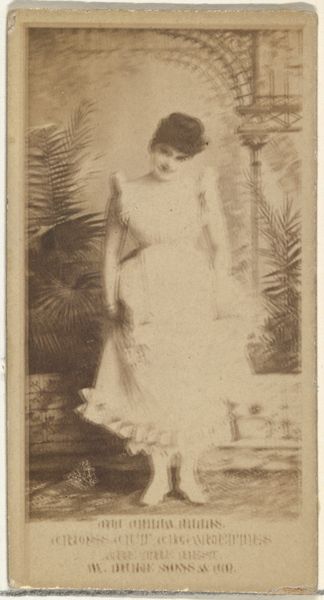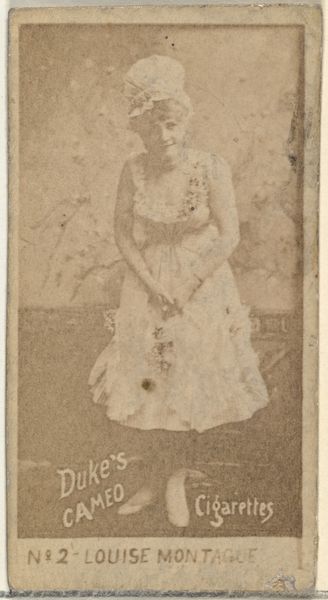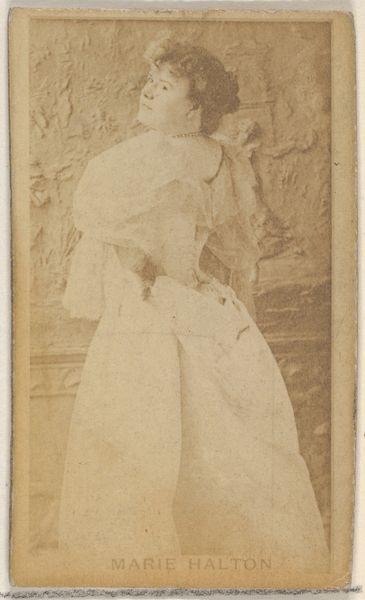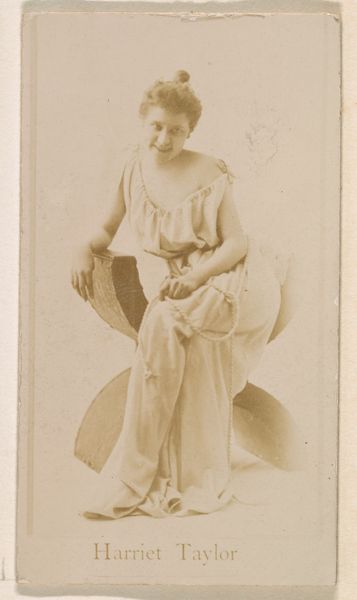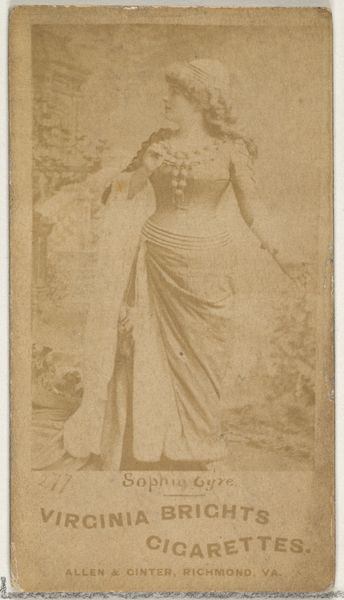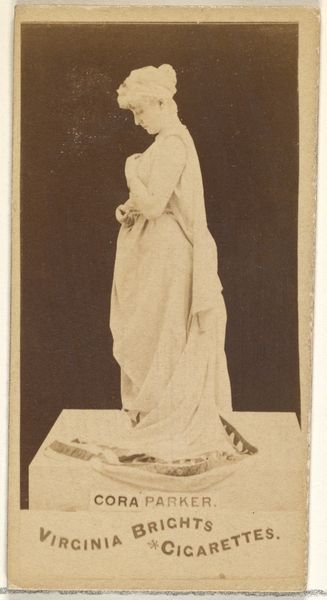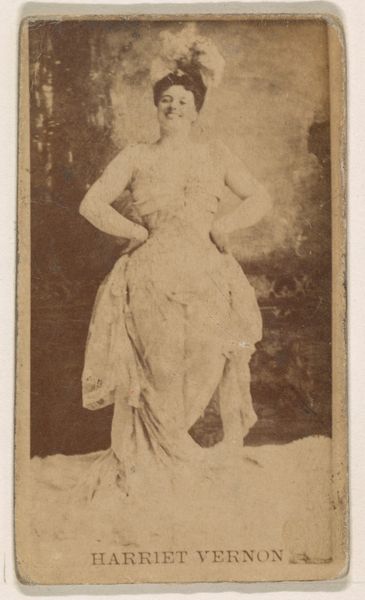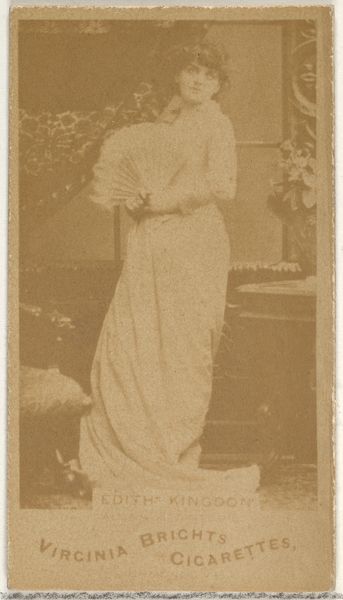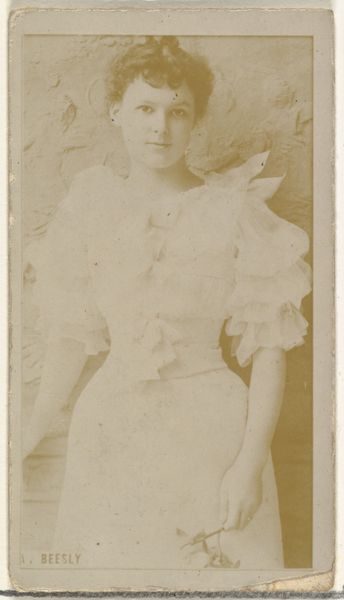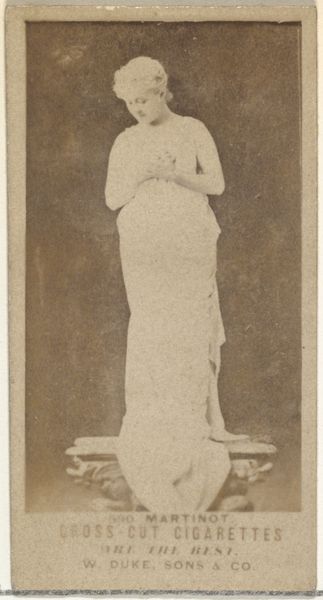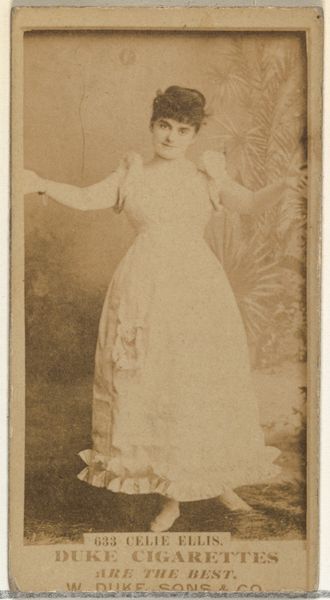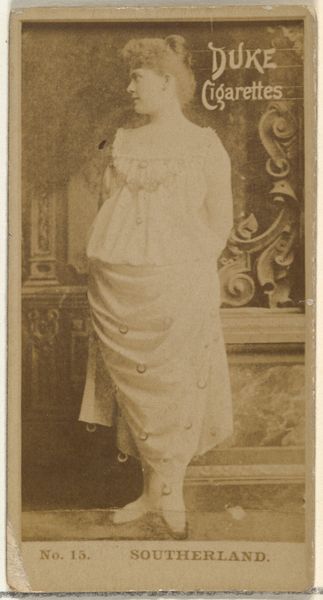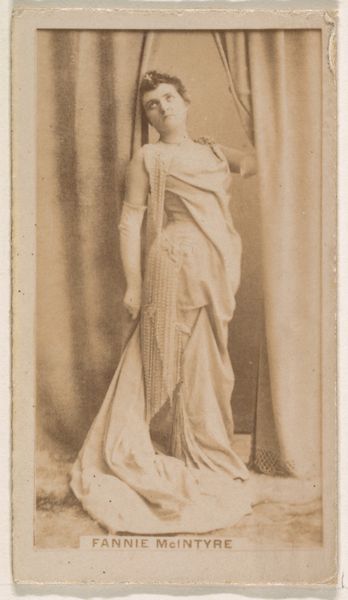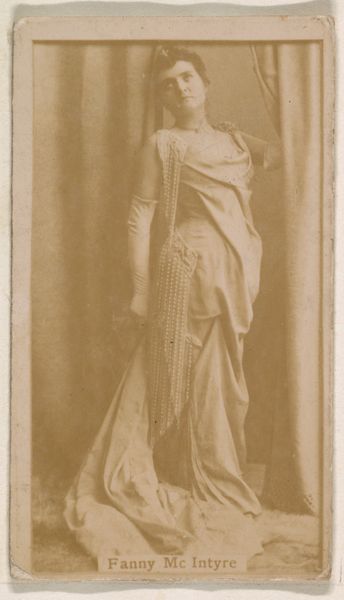
Card Number 520, Celie Ellis, from the Actors and Actresses series (N145-7) issued by Duke Sons & Co. to promote Duke Cigarettes 1880s
0:00
0:00
drawing, print, photography
#
portrait
#
drawing
# print
#
photography
#
coloured pencil
Dimensions: Sheet: 2 11/16 × 1 3/8 in. (6.8 × 3.5 cm)
Copyright: Public Domain
Curator: Let's consider this card, "Card Number 520, Celie Ellis," produced in the 1880s by Duke Sons & Co. as a promotional item for Duke Cigarettes. What catches your eye? Editor: I'm intrigued that this delicate portrait of an actress appeared on a cigarette card. The juxtaposition is odd. What can we say about why it was made like this? Curator: Exactly! The key lies in understanding its material function. This wasn't *just* art; it was a commodity circulated with another commodity. Consider the labour involved: from the tobacco farmers to the printers, to Celie Ellis herself, selling her image. What does the mass production of these cards suggest about the accessibility of images at this time, and for what audiences? Editor: So, this card isn't really about Celie Ellis, the person. It's about the industry behind it, and consumption in general. But was cigarette marketing that effective using photographs and colored prints of popular celebrities like her? Curator: Think about it. This was a relatively new form of advertising. Photography was becoming more accessible, and mass-produced color prints even more so. To plastering cigarette cards, in comparison to painted signs on brick buildings, enabled them to be collected like ephemera, or simply disposed of with ease. Now, consider the reach this afforded Duke Cigarettes. These images brought visibility and influence to otherwise potentially marginalized peoples; consumers, labourers and working-class public. The art isn't an isolated entity, but intricately linked to these networks of power and commerce. Does knowing that, impact your perspective? Editor: It definitely makes me rethink it. It's not just a pretty picture; it's a tiny cog in a massive marketing machine, representative of mass consumption. Thanks! Curator: Precisely. By examining the materials and methods of production, and situating it in its social context, this seemingly simple card reveals the complex interplay of art, industry, and consumerism.
Comments
No comments
Be the first to comment and join the conversation on the ultimate creative platform.
